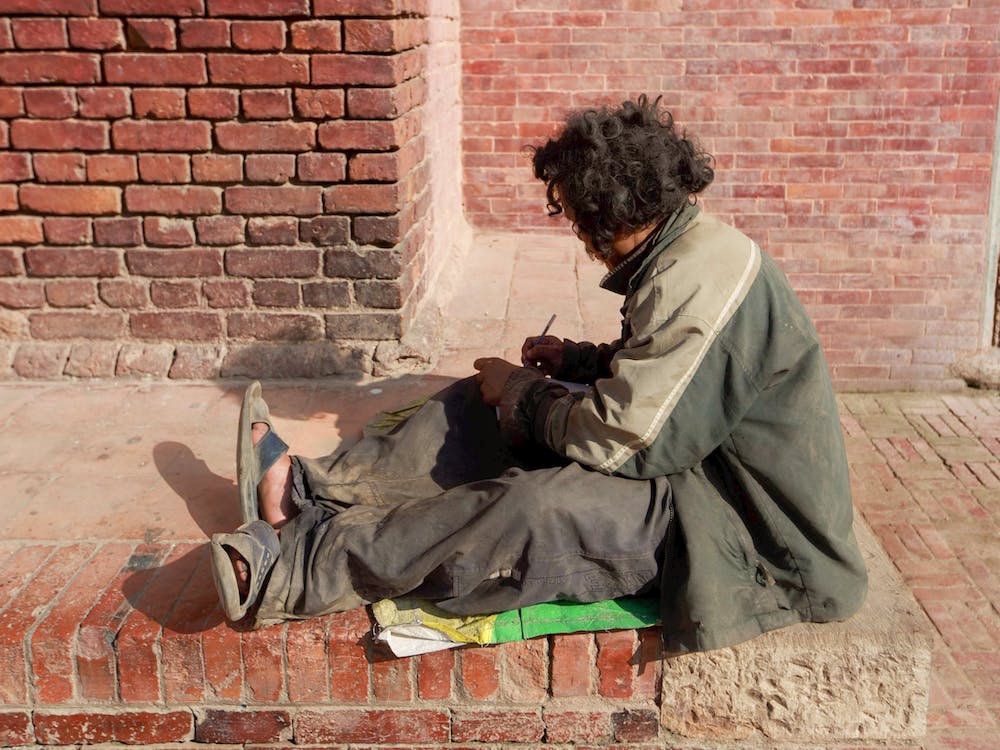
Already one of the least affordable rental markets in the world has seen rent increases, eight interest rate rises, rising expenses of living, and natural calamities compound the problem.
Belinda has been turned down for rentals more than a hundred times in the last year.
A temporary shelter in Campbell town, southwest of Sydney, is now home to the 39-year-old Australian single mother of four. She has six months to find a place to live that costs less than 500 Australian dollars (€310) a week, or she will be forced to sleep on the streets.
After that, I have no idea what to do with myself. There’s a lot of stuff in my home that I don’t want to throw away. Belinda comments, “I don’t really want to get go of my cat or dog.” “To be quite honest, it is very terrifying.”
What was already one of the least affordable rental markets in the world has been exacerbated by years of relentlessly increasing rents, eight straight increases in interest rates, growing expenses of living, and terrible natural catastrophes.
According to SGS Economics and Planning’s Rental Affordability Index research, the cost of renting in every state capital has increased since last year.
Another analysis by the non-profit welfare agency Anglicare reveals that just 0.1% of rentals in Australia are affordable for couples without jobs and single parents on government help.
Wages have yet to keep pace with rising rents, so a minimum wage worker is barely getting by. According to property consultant Savills, Sydney’s rental market is in the top 10 most expensive in the world, ahead of places like Miami and Paris.
Sydney was listed as the world’s second-least affordable market by Demographia’s International Housing Affordability Study in 2016. Hong Kong was ranked among the most expensive market in the world.
Maria (46), a participant in a housing program offered by the non-profit Dignity in Campbelltown, explains why she cannot buy a home independently since she only has one income source.
As a result of rising home prices, a record number of individuals are now renting since they can no longer afford to purchase. However, the rental supply is at a 20-year low. Increasingly, “we have seen at the bottom end of the market, those on lower incomes, the availability of rental property accessible to them is falling very considerably,” says Cameron Kusher, head of Economic Research at Data company PropTrack.
Demand has increased this year due to increased migration after the reopening of borders; as a result, rental bidding wars have broken out in several areas. The government of New South Wales declared last week that it will outlaw rental bidding in the form of an auction.
But welfare organizations and renters say that landlords are evicting tenants because they want to raise rents to match inflation, which is at a 32-year high.
Dignity’s CEO, Suzanne Hopman, predicts that this holiday season will be their busiest ever as more individuals seek shelter, food, and other assistance.
The Campbelltown shelter run by Hopman is complete, and he worries that more homeless people are on the way.
“The expense of living and rising rents have placed further strain on those who were already at risk of homelessness and the shortage of housing availability,” she adds. “Every tale of homelessness is distinct.”
Many people who are homeless choose to avoid being seen by police, the media, and the general public by making their homes in vehicles such as automobiles or campervans.
In Under Cover, a feature documentary directed by Sue Thomson and produced by Adam Farrington-Williams, the filmmakers and producers follow a diverse group of women over 50 as they navigate homelessness.
They’re the homeless people nobody sees. When analyzing homelessness, it’s essential to remember the role that gender inequality and pay differences had in contributing to the problem, as Thomson puts it.
The housing situation in Australia has been exacerbated by the country’s worst floods on record, which struck the east coast earlier this year, destroying houses and forcing around 40,000 people to escape.
Owners of rental properties often justify price increases by citing increases in operating expenses.
The vice president of the Property Owners Association of New South Wales, Debra Beck-Mewing, cites increasing mortgage rates, maintenance expenses, and associated charges like strata fees and council taxes as examples of cost constraints.
Landlords lowered rates during the pandemic, and rents are on the rise again, according to Beck-Mewing, and expected to continue rising in 2023 due to increasing rental demand and an over 30% increase in immigration permits.
Since the government has been actively discouraging investment in the rental sector, there is a severe shortage of available rental housing. And now, because of migration, the rental crisis will further worsen,” predicts Beck-Mewing.
The supply of affordable and public housing has likewise lagged behind demand.
Australia’s Prime Minister, Anthony Albanese, has committed to addressing the issue. In October announced, a national housing agreement that would provide grants totaling 350 million Australian dollars to fund the building of 10,000 low-cost dwellings.
Although some pension funds and experts are skeptical, the Australian government has invited the country’s $3.3 trillion pension fund sector to assist in the construction of affordable housing.
According to Trina Jones of Homelessness New South Wales, for the transition to be a success, dwellings must be typical of social and cheap housing rather than designed to maximize profit.
When asked about the prevalence of homelessness in America, Jones said, “We know families are sleeping in tents, in automobiles, and apprentices who cannot keep their apprenticeship because of homelessness.”
To quote Reuters: “It all begins with a house,” and “we must invest in that safety net and help the folks to make sure their homelessness is short and nonrecurring.”








